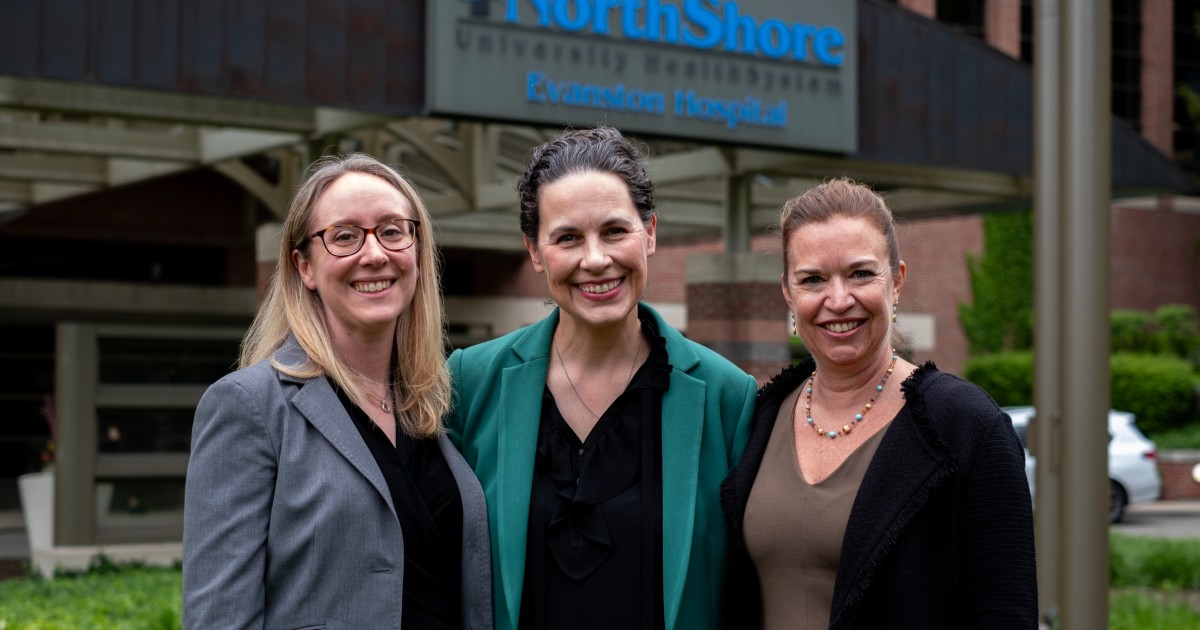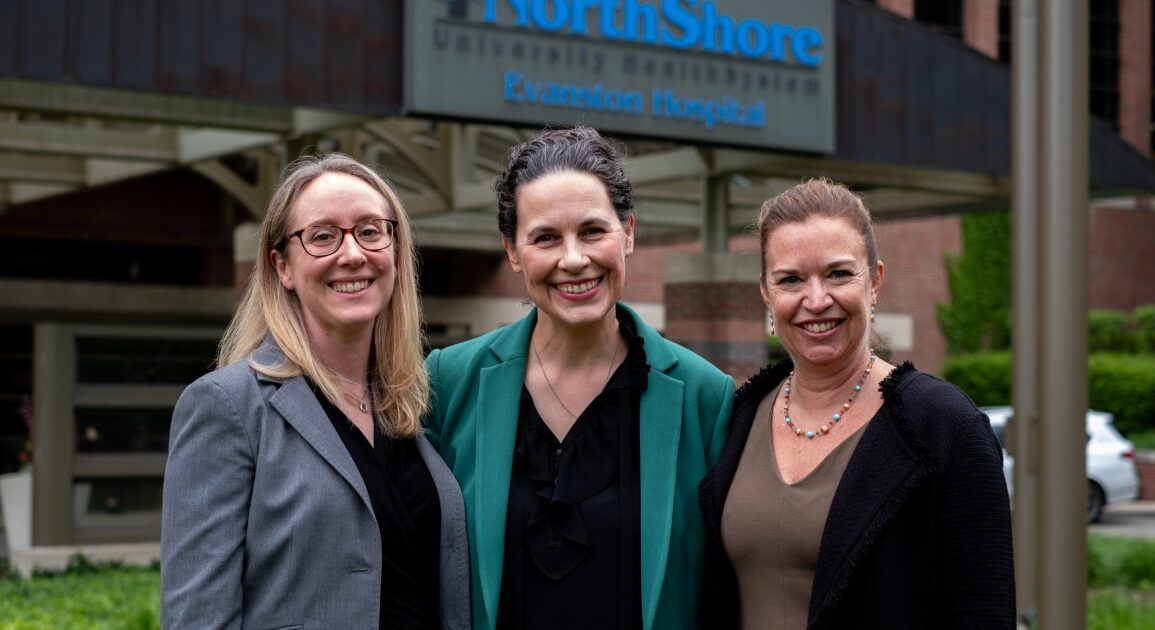
Endeavor Health plans to launch a $7 million study to help pregnant patients, especially Black women, be more seen and heard during labor.
The goal of the study, called I’M SPEAKING, is to make sure patients have more of a say in what happens during their deliveries, and to ultimately reduce unnecessary C-sections and health disparities at hospitals around Illinois.
Black patients are more likely to report that their team of providers didn’t listen to them, “or even that the team explicitly violated their requests or bodily autonomy,” according to research included in the I’M SPEAKING proposal.
Dr. Ann Borders, an OB-GYN at Endeavor who works with high-risk patients at Evanston Hospital, is one of the lead investigators on the study.
“In a busy labor and delivery unit, everyone’s focused on safety,” Borders said. “Everyone’s trying to have mom and baby have a safe outcome and have the best experience. But things can get lost.”
The idea is to slow doctors and nurses and everyone else down during delivery to not just provide what that patient needs medically, but to do it respectfully and share in the decision-making, Borders said.
In Illinois, Black women are nearly twice as likely to die from any pregnancy-related condition and almost three times as likely to die from pregnancy-related medical conditions, such as having a heart issue, compared to white women, according to the state public health department’s latest report on women who died while pregnant or within a year of giving birth.
The I’M SPEAKING proposal cites a variety of research, including that C-sections contribute to severe maternal morbidity or a “near miss” of death. And while C-sections can be lifesaving, they are major surgeries with potential consequences that disproportionately affect Black women, research shows, such as infections and hysterectomies.
Borders, along with Drs. Beth Plunkett and Emily White VanGompel, will roll out a program over five years called TeamBirth at 22 hospitals around Illinois. This model was developed by Ariadne Labs, a joint center at the Harvard T.H. Chan School of Public Health and Brigham and Women’s Hospital, and it’s intentionally simple, Borders said.
There would be a whiteboard in each patient’s room — already common in labor and delivery rooms — that would focus on the patient’s preferences. The doctor, nurse and patient would huddle throughout labor, talk about where the patient is at, what the patient wants for their next steps and write it down.
“We’re able to really track that this is happening, that patients are engaged in these hurdles early in labor and throughout labor and that they feel really a part of the decision-making,” Borders said.
For example, a patient might be pushing for a certain amount of time and the talk turns to how much longer should she keep going before a doctor recommends a C-section. Maybe the patient wants to change positions or use a peanut ball between their legs to help labor progress. Maybe the patient just needs some more time to push.
The goal is to make sure the providers center the patient and don’t make decisions outside the patient’s room, Borders said.
There has been some progress in Illinois for a key metric providers follow: the C-section rate for low-risk women having their first babies. Over a decade ending in 2022, overall the rate hovered between 26 and 27%, state public health data shows. The rate was highest for Black and Asian patients compared to white and Hispanic patients. The national goal is just under 24%.
Borders also is the executive director of the Illinois Perinatal Quality Collaborative, a group that works on birth equity issues across the state. She said the collaborative has helped reach the national goal overall for hospitals that participate in the group’s initiative promoting vaginal deliveries. But disparities still exist at some individual hospitals.
Illinois can look to Michigan for how the TeamBirth model might play out. Lisa Kane Low is a midwife in Michigan who helped implement the initiative in her state.
For her personally, Kane Low said TeamBirth is a natural fit as she delivers babies. In many ways, she said, it mirrors the midwifery model of care.
“In the beginning it was a little hard for me to wrap my head around the idea that we needed to gear up to do a whole program to do something that I would consider automatic standard of care,” said Kane Low, who is also a professor at the University of Michigan. “But … there were hospitals or sometimes even units (where) the culture of the unit was to just tell people what was going to happen or to set expectations in a way that didn’t give people choices.”
While the C-section rate for low-risk women having their first baby hasn’t moved much in Michigan, hovering between 28 to 29%, TeamBirth has helped patients and their families feel more engaged and valued with their providers, Kane Low said.
She points out the initiative also removes the risk of implicit bias. Every patient is included, no matter their race or ethnicity.
Karie Stewart, a Black midwife in Chicago, said the majority of her patients are Black women who have relayed stories about how they felt other providers didn’t listen to them. Many are especially scared of dying.
Sometimes it’s just about how information is brought to them, Stewart said — not because we said so, but explaining why something is happening and why it’s the best-case scenario.
“I think this [study] will force providers to be more human and use their words,” Stewart said.
The I’M SPEAKING study is set to begin within the next six months.
Kristen Schorsch covers public health and Cook County government for WBEZ.



